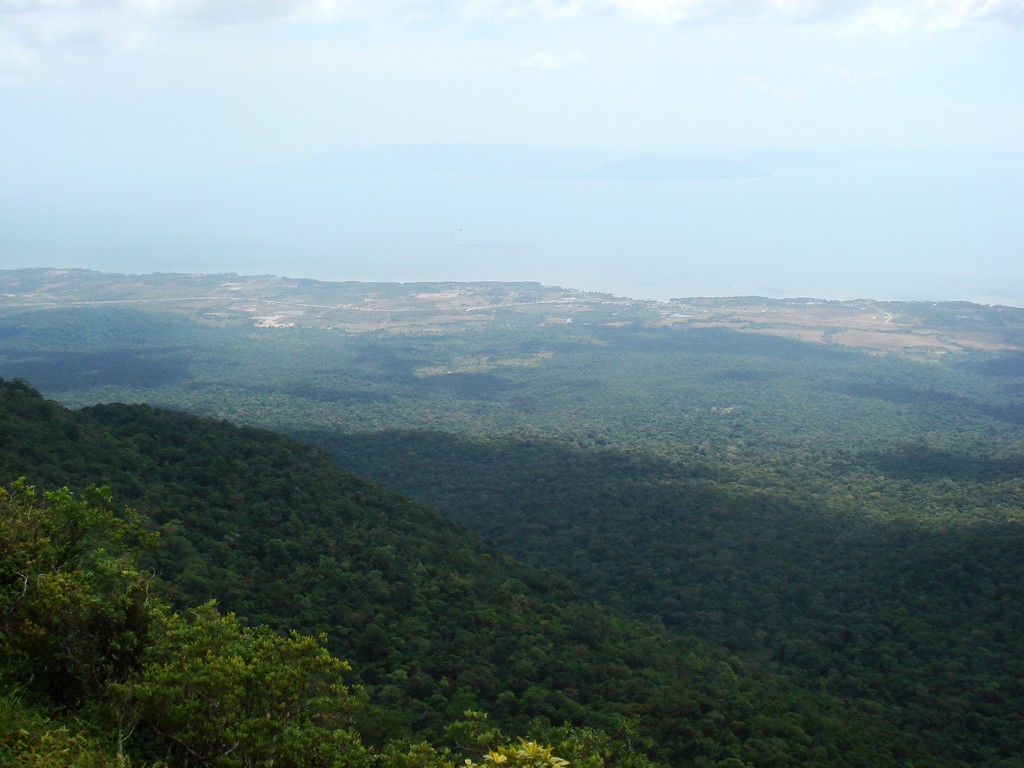The classification of forests is set out in the Law on Forestry 2002. The law applies to both natural forests and plantations, and “defines the framework for management, harvesting, use, development and conservation of the forests in the Kingdom of Cambodia. The objective of this law is to ensure the sustainable management of these forests for their social, economic and environmental benefits, including conservation of biological diversity and cultural heritage.”1
Bokor hill station. Photo by Leon Meerson, taken on 11 December 2006. Licensed under CC BY-NC-SA 2.0.
Permanent forests are divided into Permanent Forest Reserves and Private Forests. With Private Forests, owners are free to manage, develop, harvest, use, sell and distribute the products themselves.
Permanent Forest Reserves fall into 3 further categories:
- Production forests have the sustainable production of forest products and by-products as their first function, and permits are issued for this. Their protection function is secondary. Production forests include:
- Forest Concessions, which are established through public bidding and cannot exceed 30 years.2 Local communities retain customary access and user rights3
- Production Forests not under concession
- Forests Rehabilitated
- Reserve Forestland for reforestation or tree plantation
- Reserved forestland for forest regeneration
- Degraded Forestland
- Community Forests (see below).
- Protection forests have protection of the forest and its ecosystem as their priority. Permits are not issued for the harvest of forest products or by products, although although local communities have customary user rights to collect forest products and by-products so long as the impact is minor. Protection forests include:
- Reserve Forests for special ecosystems
- Research forests
- Forests for regulating water sources
- Forests for watershed protection
- Recreation forests
- Botanical gardens
- Religious forests.
- Conversion forestland is idle land, mostly with secondary vegetation, not yet designated for use. This is classified as Permanent Forest Reserves until the government decides to use and develop the land for another purpose.
The Forest Law sets the Ministry of Agriculture, Forestry and Fisheries with the tasks of classifying, registering and setting boundaries for all forests in the Permanent Forest Estates. They are managed in accordance with the National Forest Management Plan.
Community forests
Many rural communities are dependent on forests for at least part of their livelihood, including indigenous communities in Ratanakiri, Mondulkiri and other provinces. Community members collect timber and plant and animal-based non-timber forest products seasonally.
The Forest Law ensures customary user rights of forest products and by-products for local communities4 and provides a legal basis for rural communities to use and help manage forests through community forestry. While the Forest Law provides a legal basis for community forests, the 2003 Sub-decree on Community Forest Management set out rules for the establishment, management and use of these forests in Cambodia.
The ODC dataset for community forests lists 337 different forests. There is a vast range of sizes, with a handful being less than 10 hectares and one over 5000 hectares.
Protected forests
Protected Forests are generally established under individual sub-decrees, specifically for the purpose of protecting biodiversity and conservation. They are home to many endangered or threatened species. The ODC dataset for protected forests lists nine forests, from one of 2,285 hectares in Takeo to the Central Cardamom Mountains Protected Forest with 401,313 hectares.
Last updated: 22 September 2015
Related to forest classifications
- Environment and natural resources
- Community forestry
- Protected areas
- Protect forest
- National parks and wildlife sanctuaries
References
- 1. Article 1, Law on Forestry 2002, Royal Government of Cambodia
- 2. Article 17, Law on Forestry 2002, Royal Government of Cambodia
- 3. Article 13, Law on Forestry 2002, Royal Government of Cambodia
- 4. Article 2, Law on Forestry 2002, Royal Government of Cambodia


